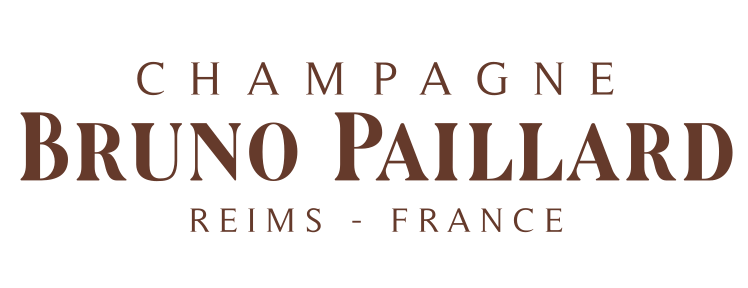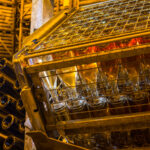A wine’s lives
what is disgorgement?
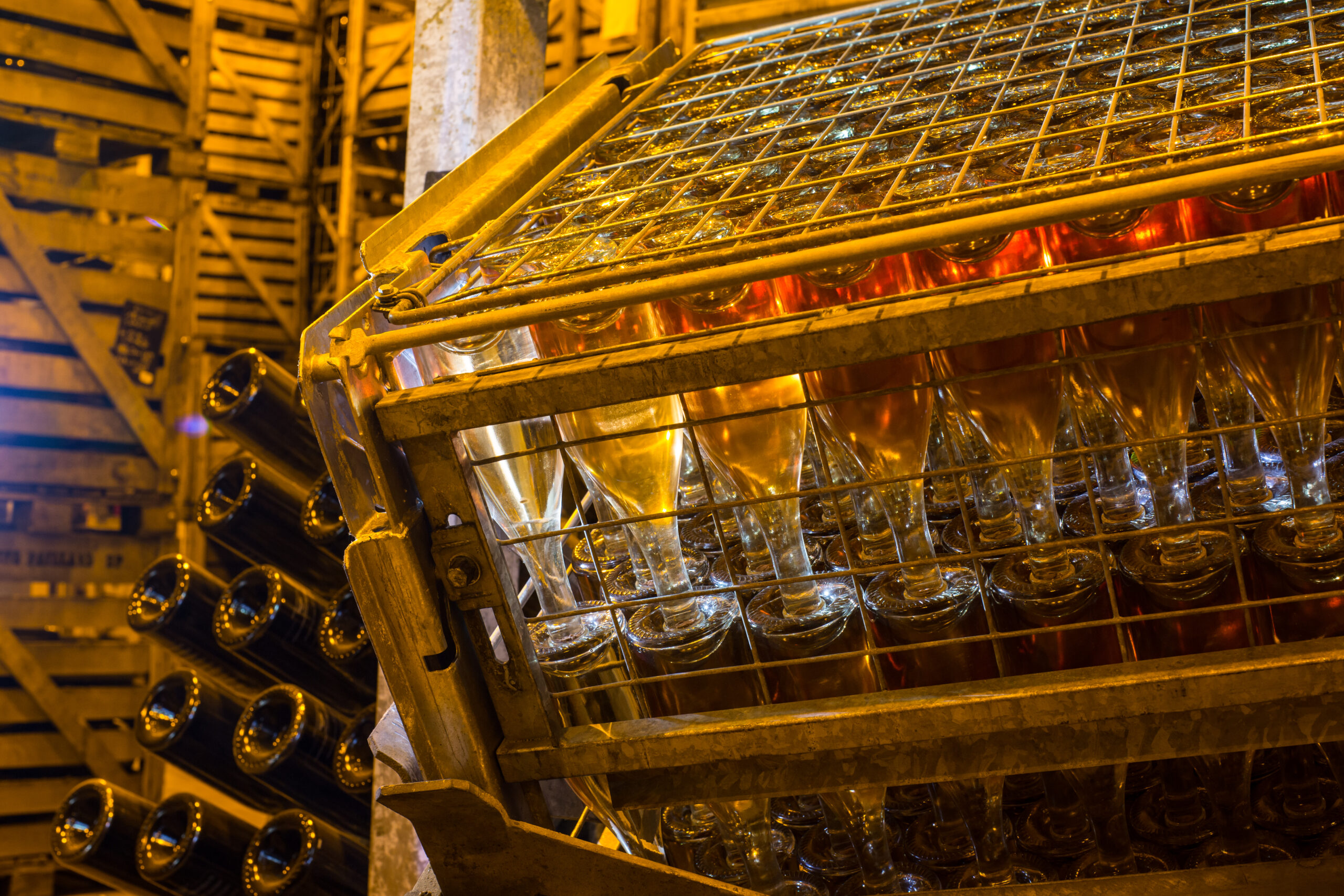
THE WORK OF TIME

At Maison Bruno Paillard, Champagnes mature in the cellars for an average of three years for the multi–vintages wines and between eight and 12 years for the single vintage wines. The deposit that forms as a result of the fermentation in bottle, must now be removed. If this deposit were left in the bottle, the resulting wine would be cloudy, rather than crystal clear, when served…
In order to remove the deposit, one first has to coax it to the neck of the bottle. This process, which can take anything from eight days to five weeks, is called remuage. The bottles are placed in wooden racks, fashioned in such a way that they can be gradually moved every day by hand – both rotated and tipped at the same time, to allow the deposit to slide towards the neck of the bottle. Remuage can also be done with the help of machines called gyropalettes which replicate the same hand movements but with a greater level of precision.
When the bottle is lying in a vertical position – head first – the deposit becomes concentrated against the cork, just a few millimetres thick. It can now be removed – a process called disgorgement.
HOW IS DISGORGEMENT DONE?
Disgorgement itself takes only a few seconds, and was originally done “à la volée”: the cellar worker would open the bottle, neck down, and with a quick movement stand the bottle upright while controlling with his thumb the amount of wine that escaped with the deposit. The wine left in the bottle would be completely clear. Nowadays, this process is mechanised, allowing for complete consistency from one bottle to the next and all within perfectly hygienic conditions.
AFTER DISGORGEMENT

There are numerous side effects on the wine as a result of disgorgement. At the moment of disgorgement, the wine undergoes a sort of trauma, as would a patient who undergoes a medical operation.
As a matter of fact, in the language of cellar workers, “to disgorge” is expressed by using the word “to operate”. As a consequence, the first requirement of the wine after disgorgement is convalescence. As with a surgical operation, this convalescence should be longer for an older subject than for a younger one.
It is this experience that leads us, at Bruno Paillard, to give a minimum of five months of rest after disgorgement to the Première Cuvée and the Rosé Première Cuvée, which are relatively youthful wines; 8 months for the Blanc de Blancs Grand Cru, 8 to 12 months for the wine vintages, and up to 18 months for the Nec Plus Ultra.
During the convalescence, the wine will recover a balance between freshness and softness of the dosage, to make a perfect marriage.
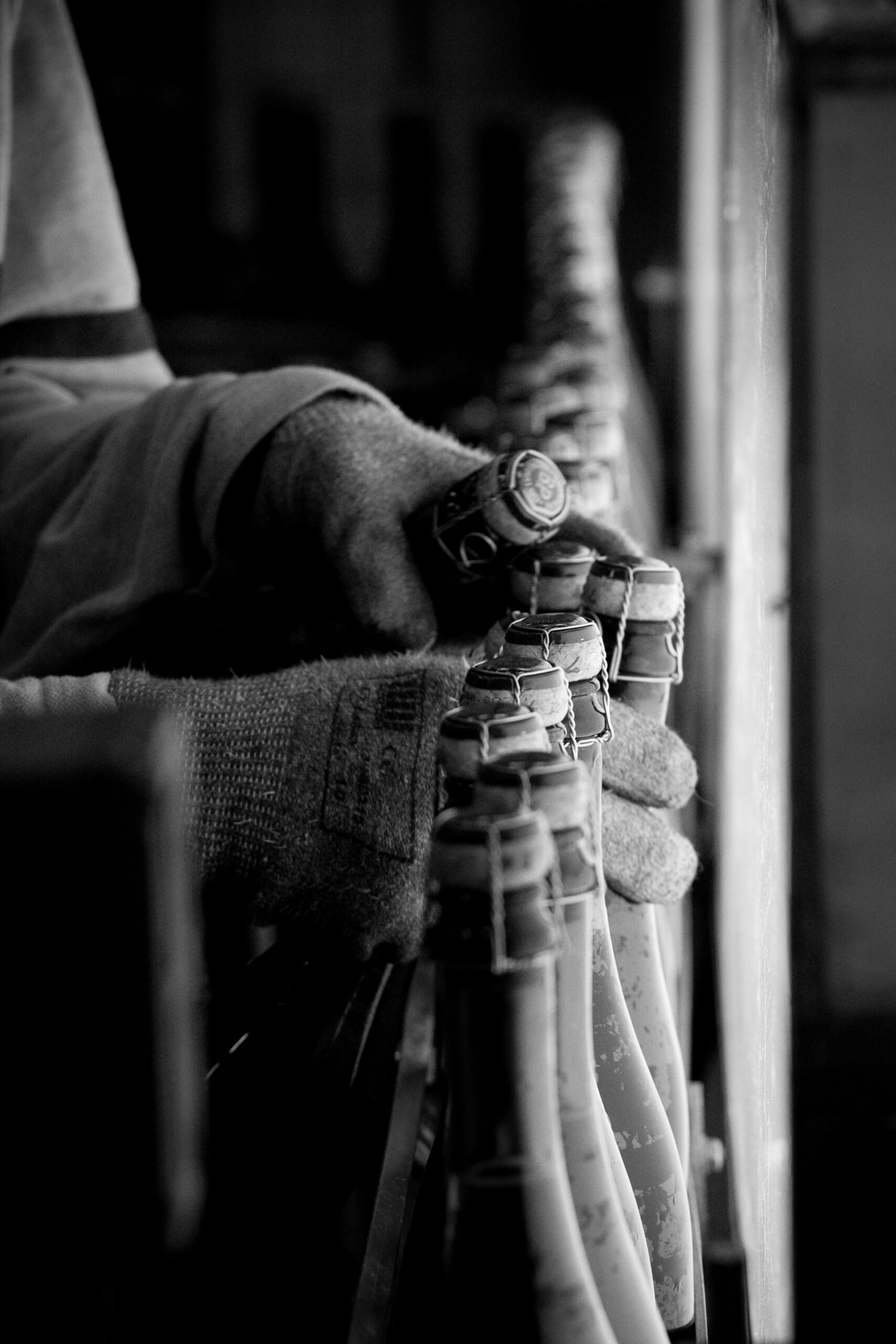
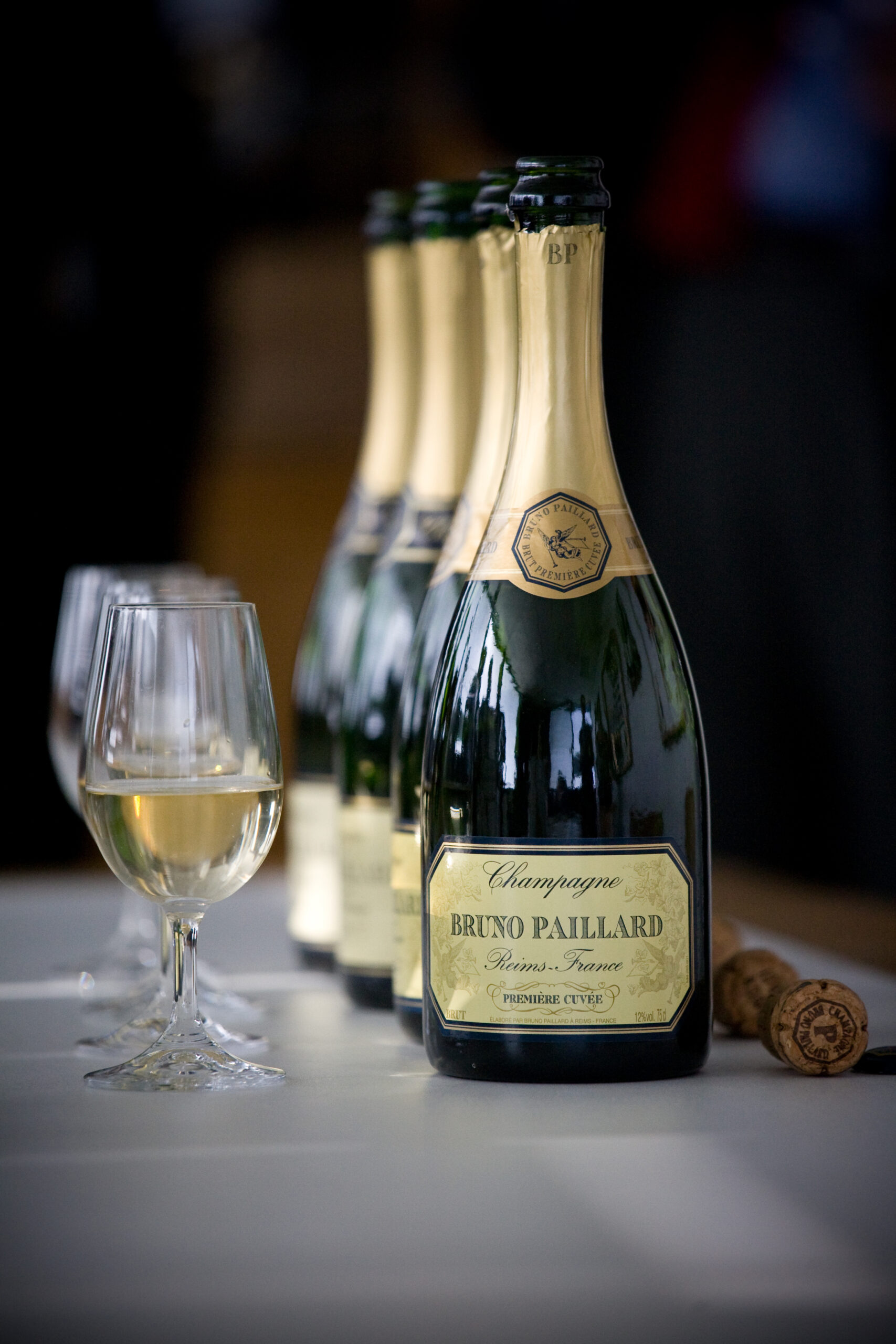
LIVES AFtER DISGORGEMENT

After this period of rebalance, the wine will continue on its journey. Its evolution will depend on a combination of several factors. Firstly the natural tendencies of the grape varieties – even if they vary considerably depending on the crus of our cool, northern Champagne region – are well known: the Chardonnay grape high in acidity, with citrus notes – lime and white flowers gains notes of grapefruit, orange and candied peel with age.
The Pinot Noir grape has typical notes of red berries in the first flush of youth – strawberry, raspberry,redcurrant, cherry – but evolves towards black fruits – blackberries and blackcurrants – and spicy notes with age. Pinot Meunier, generally lower in acidity than the first two varieties, will evolve from notes of soft, sweet fruit – pear, banana, lychee – towards notes of patisserie, candied fruit and even fig. Apart from varietal evolution, which of course will be to a lesser or greater extent depending on their percentage in the blend, two other factors resulting from the disgorging process play an essential role…
Micro–oxidation, a very slow and perfectly natural phenomenon, will now occur. In fact, before the disgorgement there would have been no oxygen in the bottle as it would have all been used up during the fermentation and transformed into carbonic gas: the same gas,which is released in the form of tiny bubbles upon the popping of the cork… but at the moment of disgorging, the opening of the bottle allows a tiny quantity of oxygen to enter, and this will later give rise to micro–oxidation.
The other main element in the evolution of the wine occurs with the addition of the few grams of sugar, the dosage, before the bottle receives its final cork. This sugar will cause a micro maderisation – certainly very weak and very slow in the case of wines which have very little dosage, like Bruno Paillard Champagnes, but just as it is natural, it is perceptible.
It is the combination of this micro–oxidation and micro–maderisation that will characterise the evolution of the wine after the disgorgement.
WHEN TO TASTE?

In the life of a bottle of Champagne, the disgorgement is a key moment: from that day, a process of ageing begins that is unique to Champagne. The aromatic, visual and taste evolution can be classified in five steps:
The first step is dominated by fruit aromas (citrus and red fruits), the colour is very pale and the effervescence fine and lively. This is the fruit stage.
The second step is dominated by floral aromas (white flowers and roses). The colour remains the same while the effervescence becomes smoother.
The third period is characterised by accents of spiced notes and nuts – almonds, hazelnuts – this is the “age of spices”.
To this are added in the fourth period, notes of baked bread – this is the “toasted period”.
As a last step the wine evolves towards notes of candied fruit, gingerbread, honey and even roasted aromas: this is the candied fruit stage, the stage of fullness/richness.
Depending on the ageing conditions, this maturation “fruits – flowers – spices – toast – candied notes” occurs more or less rapidly. However, a minimum of four to five years is necessary to reach the first spicy aromas.
Only great Champagnes can offer this fantastic evolution highly sought after but connoisseurs who find pleasure in them, can cellar them among their wines.

FIND OUT MORE


